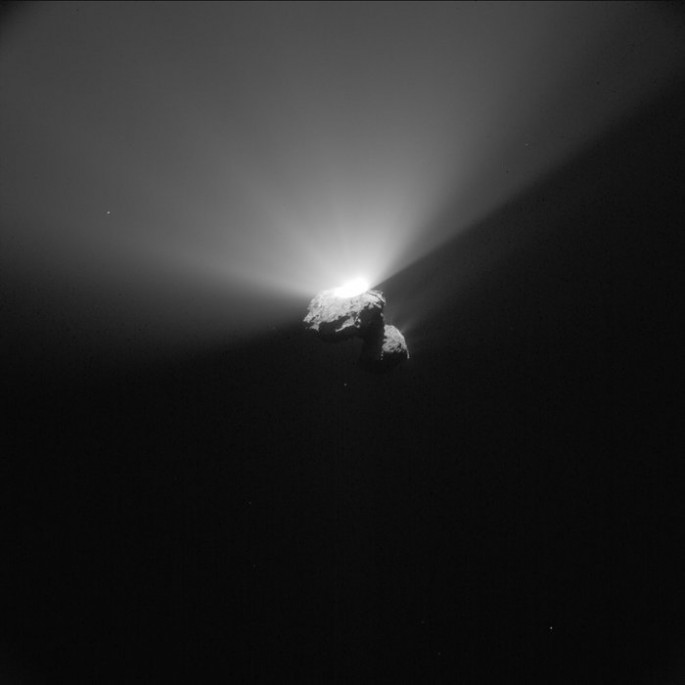Forthe first time ever, molecular oxygen has been detected on a comet, according to scientists from the European Space Agency.
This oxygen was discovered by the ESA's comet hunting spacecraft, Rosetta, where it has been orbiting Comet 67P/Churyumov-Gerasimenko since August 2014. Mission team scientists believe that the presence of oxygen on the comet may possibly exist even before the solar system was born.
According to lead author of the study, Andre Beiler from the University of Michigan, the team believes that this oxygen is primordial, meaning it could be older than the solar system itself. This new finding may provide new insights regarding the formation of elements in the solar system that began some 4.6 billion years ago, according to researchers.
This discovery is also considered as a surprise to scientists as they often assume that oxygen could not exist on comets such as 67P since oxygen easily combines with other elements.
According to co-author of the study Kathrin Altwegg from the University of Bern in Switzerland, the team never imagined how oxygen that pure can "survive" in that state for billions of years. She adds, this is the most surprising discovery so far since oxygen was not expected when it comes to the molecules present in a cometary coma.
One of Rosetta's scientific instruments onboard known as the Rosetta Orbiter Spectrometer for Ion and Neutral Analysis (ROSINA) detected oxygen on comet 67P. The comet coma is the cloud of gas that surrounds a comet where ESA scientists expected to detect water, carbon dioxide and carbon monoxide.
All these three compounds include oxygen molecules as free molecular oxygen which is also found in Earth's atmosphere, making this a truly surprising discovery.
Altwegg says that this new discovery may probably challenge traditional theories how the solar system was created when it comes to the chemistry involved. She adds that this oxygen evidence as an ancient element may likely disprove some solar system models.
Researchers are suggesting that the oxygen on comet 67P was probably created with high energy particles that collided with ice, creating hydrogen and oxygen located in a cold and dense region of space that may have triggered the birth of the sun.
Today, several moons of Jupiter and Saturn already contain molecular oxygen which may have originated from the same process of high energy particle collisions with oxygen containing compounds and then releasing this oxygen into deep space.
This new finding is published in the journal, Nature.



























